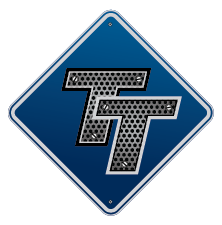14 Hour Rule?
Topic 18725 | Page 1

This might help, but read the other links I sent you first:
CDL:
Commercial Driver's License (CDL)
A CDL is required to drive any of the following vehicles:
- Any combination of vehicles with a gross combined weight rating (GCWR) of 26,001 or more pounds, providing the gross vehicle weight rating (GVWR) of the vehicle being towed is in excess of 10,000 pounds.
- Any single vehicle with a GVWR of 26,001 or more pounds, or any such vehicle towing another not in excess of 10,000 pounds.
- Any vehicle, regardless of size, designed to transport 16 or more persons, including the driver.
- Any vehicle required by federal regulations to be placarded while transporting hazardous materials.
Logbook:
A written or electronic record of a driver's duty status which must be maintained at all times. The driver records the amount of time spent driving, on-duty not driving, in the sleeper berth, or off duty. The enforcement of the Hours Of Service Rules (HOS) are based upon the entries put in a driver's logbook.
HOS:
Hours Of Service
HOS refers to the logbook hours of service regulations.In a nutshell - once you start on-duty (pre-trip in the morning) you have 14 hours in which to complete 11 hours of driving.
At some point in the 11 hours - you must take a 1/2 hour break - you cannot drive more than 8 hours continuously, without taking this break (meaning you have to go OFF DUTY for a 1/2 hour). Which actually means your 14 hour clock IS ACTUALLY A 13.5 HOUR CLOCK - since the break also occurs in this 14 hour window.
HOW you break up this 11 hours (inside the 14 hour window), is dependent on WHEN you have to get where you need to be (TRIP PLANNING). You can drive for 5 hours, stop for 2.5 hours and drive for another 6 - or drive the straight 11 with a 1/2 hour break.
Keep in mind this 14 hours also includes fueling, etc.. You also want to TRIP PLAN for your fuel stop(s) and where you are going to stay for your 10 hour break. NO ONE likes to see 15 minutes left on their clock(s), and have nowhere to park.
Rick

In addition to the already excellent advice posted; I will just clarify that you can exceed your 14 (and your 70) while on-duty--anything but driving. So, if your post-trip, fuelling, unloading, etc., takes you beyond your 14 you are just fine. There is no limit in regards to the amount of time that can be spent on-duty not driving. However, when you return to driving it can only be after at least 10 hours consecutive off-duty and is subject to hours remaining on your 70.
The only way to stop your 14 hr is doing an 8 hr sleeper berth for the 8/2 split. The 2 hr portion does not stop your 14hr clock. After 8hrs in the sleeper berth your 14hr clock resets to what you had going into the break. Unless of course you are doing a 2/8 split. Then the 14hr and 11hr clocks reset to what you had prior to going into your 8hr break plus any time used before taking your 2hr break. But I digress. I am not overly fond of split logging, although I have used it on several occasions. I prefer to do a 2/8 split over the 8/2, again I digress.
Drive Safe and God Speed
Sleeper Berth:
The portion of the tractor behind the seats which acts as the "living space" for the driver. It generally contains a bed (or bunk beds), cabinets, lights, temperature control knobs, and 12 volt plugs for power.

.
Actually it should read...
You cannot drive after having been on duty (driving and not driving) for 8 consecutive hours. This time would also include any breaks of less than 30 minutes in duration. Every time you take a break off duty it resets your 8 hour clock but does not stop the 14 hour clock.
In addition to the already excellent advice posted; I will just clarify that you can exceed your 14 (and your 70) while on-duty--anything but driving. So, if your post-trip, fuelling, unloading, etc., takes you beyond your 14 you are just fine. There is no limit in regards to the amount of time that can be spent on-duty not driving. However, when you return to driving it can only be after at least 10 hours consecutive off-duty and is subject to hours remaining on your 70.
Keep in mind - in addition to this.
While you CAN stay "On Duty" past the 14 & 70 (but cannot drive) staying logged On Duty burns your 70 HOUR CLOCK.
While you only asked about the 14 hour clock - your 70 determines your overall availability to drive.
You want to do your best, to preserve your 70 hour clock. Once that runs out - you cannot drive again, until you gain hours back - either by a recap (when the on duty hours from the 8th day are recovered at midnight). Or by taking a break of 34 hours - which resets the 70 hour clock, hence the name "34 Hour Reset".
While recaps and resets get kind of complicated - you want to preserve as much of your 70 hour clock as possible.
Rick
Actually it should read...
You cannot drive after having been on duty (driving and not driving) for 8 consecutive hours. This time would also include any breaks of less than 30 minutes in duration. Every time you take a break off duty it resets your 8 hour clock but does not stop the 14 hour clock.
I stand corrected...
On December 27, 2011 (76 FR 81133), FMCSA published a final rule amending its hours-of-service (HOS) regulations for drivers of property-carrying commercial motor vehicles (CMVs). The final rule adopted several changes to the HOS regulations, including a new provision requiring drivers to take a rest break during the work day under certain circumstances. Drivers may drive a CMV only if 8 hours or less have passed since the end of the driver’s last off-duty or sleeper-berth period of at least 30 minutes. FMCSA did not specify when drivers must take the 30-minute break, but the rule requires that they wait no longer than 8 hours after the last off-duty or sleeper-berth period of that length or longer to take the break.
The only way to stop your 14 hr is doing an 8 hr sleeper berth for the 8/2 split. The 2 hr portion does not stop your 14hr clock. After 8hrs in the sleeper berth your 14hr clock resets to what you had going into the break. Unless of course you are doing a 2/8 split. Then the 14hr and 11hr clocks reset to what you had prior to going into your 8hr break plus any time used before taking your 2hr break. But I digress. I am not overly fond of split logging, although I have used it on several occasions. I prefer to do a 2/8 split over the 8/2, again I digress.
Most folks don't end up taking the 2/8 - because there's little to gain from it. The QC doesn't calculate the 2/8 split until you finish the 2nd 8 hour - and then you don't get a full day back anyway - especially, if you drove more than a 5-6 hours after the 2 hour break (on a 2/8). You're better off just staying off for the extra 2 hours and completing a 10 hour break. People use the 8/2 to extend their 14 hour clock - but usually end up just taking a 10 (instead of the 2nd 2 hour break) when they run out of the time they got back on the 14 (from taking the first 8 hour break).
The 8/2 split is good if you get jammed at a shipper for 6 hours or more. You're better off staying for another 2 hours (to take the first 8 on the split) and getting your that 8 back on your 14 so you can get some miles down before having to stop again.
Rick
Shipper:
The customer who is shipping the freight. This is where the driver will pick up a load and then deliver it to the receiver or consignee.
Sleeper Berth:
The portion of the tractor behind the seats which acts as the "living space" for the driver. It generally contains a bed (or bunk beds), cabinets, lights, temperature control knobs, and 12 volt plugs for power.
Commercial Motor Vehicle:
A commercial motor vehicle is any vehicle used in commerce to transport passengers or property with either:
- A gross vehicle weight rating of 26,001 pounds or more
- A gross combination weight rating of 26,001 pounds or more which includes a towed unit with a gross vehicle weight rating of more than 10,000 pounds
CSA:
Compliance, Safety, Accountability (CSA)
The CSA is a Federal Motor Carrier Safety Administration (FMCSA) initiative to improve large truck and bus safety and ultimately reduce crashes, injuries, and fatalities that are related to commercial motor vehicle
FMCSA:
Federal Motor Carrier Safety Administration
The FMCSA was established within the Department of Transportation on January 1, 2000. Their primary mission is to prevent commercial motor vehicle-related fatalities and injuries.
What Does The FMCSA Do?
- Commercial Drivers' Licenses
- Data and Analysis
- Regulatory Compliance and Enforcement
- Research and Technology
- Safety Assistance
- Support and Information Sharing
CMV:
Commercial Motor Vehicle
A CMV is a vehicle that is used as part of a business, is involved in interstate commerce, and may fit any of these descriptions:
- Weighs 10,001 pounds or more
- Has a gross vehicle weight rating or gross combination weight rating of 10,001 pounds or more
- Is designed or used to transport 16 or more passengers (including the driver) not for compensation
- Is designed or used to transport 9 or more passengers (including the driver) for compensation
- Is transporting hazardous materials in a quantity requiring placards
Fm:
Dispatcher, Fleet Manager, Driver Manager
The primary person a driver communicates with at his/her company. A dispatcher can play many roles, depending on the company's structure. Dispatchers may assign freight, file requests for home time, relay messages between the driver and management, inform customer service of any delays, change appointment times, and report information to the load planners.HOS:
Hours Of Service
HOS refers to the logbook hours of service regulations.New Reply:
New! Check out our help videos for a better understanding of our forum features

















Preview:








 TT On Facebook
TT On Facebook
14 hour rule, how does a truck driver divide his his time?